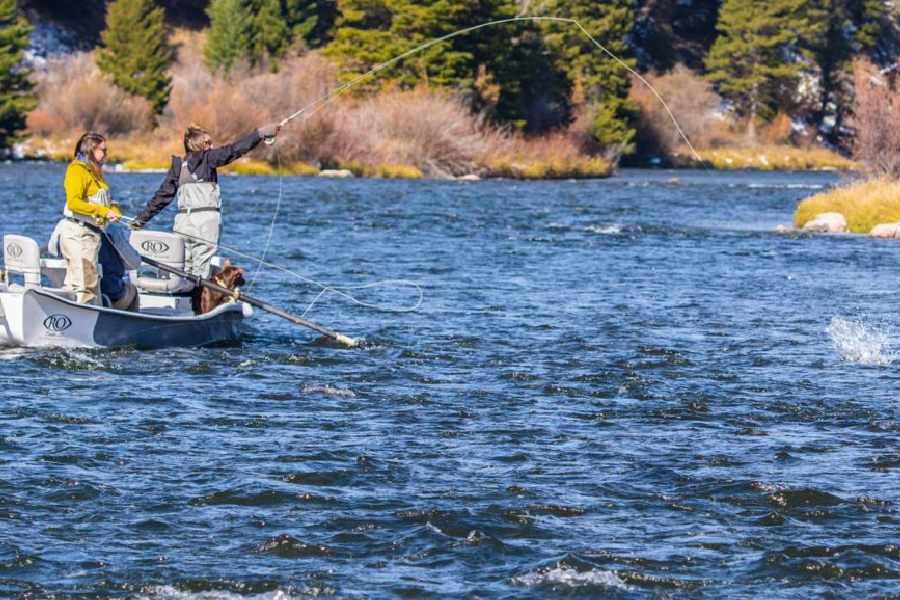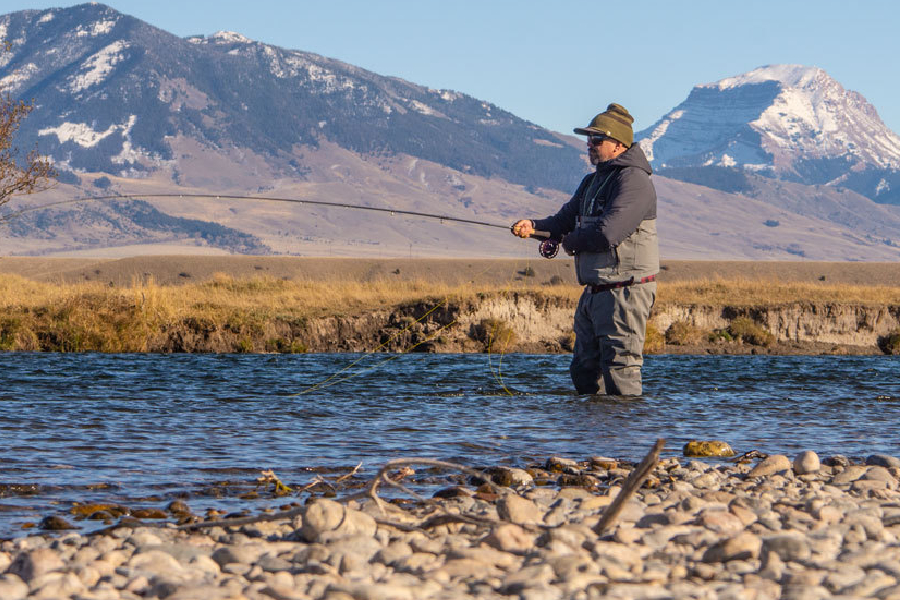Our article was picked up by the Orvis Blog!
With the nice weather we’ve been having anglers are flocking to the Madison. The most questions I get in the shop and the biggest mistakes I see on the
river are setting up a rig properly. I will go through how I like to set up my rigs whether its nymphing, throwing streamers or running dry droppers.
Please go to Orvis.com to read the rest of this article:
Nymph Rig:
Nymphing is all about depth. When we are nymphing, that typically means trout are not looking up at the surface or there aren’t any bugs out for the trout
to rise to. This alone should tell you where the trout are; deep. In order to catch these fish, you have to present the fly to the fish. I see a lot of
people throwing nymph rigs that are 2-3ft long from the indicator to the second fly. Fish will not be looking for a size 10 stonefly just below the
surface. Though the Madison is fairly shallow, a nymph rig must be between 6 and 8 feet, minimum. From there, you can add or subtract weight to shorten or
add depth to your rig. I like taking a 9-foot leader and cutting off about 12-14 inches of the tippet, re-tying that tippet with a surgeons knot and
clamping down my spits above so they don’t fall down to my point fly. Being that I’m 6 feet tall, I will use my wingspan (which about 6 feet) to measure
the length of my rig and attach my indictor above the 6ft mark. Fly fishing is a game of inches and while you may be using the right flies, if your rig is
just inches off the target, the fish wont eat. Here is a link to a video made by our friends at Blackfoot River Anglers detailing how to set up a nymph
rig:
Streamers:
Throwing steamers is by far my favorite style of fly fishing. There is nothing like watching a big trout chase your fly and absolutely demolishing it. With that being said, if you’re going to streamer fish you need to set up your rig properly in order to be effective. Some folks like throwing sinking lines/tips or poly leaders and those are fine to use. However, being that I’m mainly fishing the Madison there is no need for sink tips. The river is very shallow and sink tips tend to get snagged pretty easily. I throw my streamers on a 7.5 foot 0x mono leader with floating line. The shortened leader gives me more control over my fly but it is still long enough to let my streamer get down. If you are using a bulky streamer that is having a hard time staying down in the water column, throw some lead on about 6-8 inches above the streamer using the same surgeons knot technique I mentioned above. The positioning of the lead is important; you don’t want your weight too close to the streamer as it will effect the movement of the fly in the water but you don’t want it too far because your lead will then sit lower in the water than your streamer. Another thing I do with my streamers (and most of my larger flies) is use a non-slip mono knot instead of the classic clinch knot. The non-slip mono is a loop knot that allows the flies to move and swing better in the water. This is a great knot for non articulated streamers because it will give them some extra movement. I also believe that the non-slip knot is stronger than the regular clinch knot, which also helps when throwing large meat. Here is a link to a video explaining how to tie the non-slip knot.
Dry Dropper:
The dry dropper technique is a very effective way of picking up fish in the summer and fall months. Many of you have heard the phrase, hopper dropper; or as Hank Patterson has taught us, a hopper, hopper dropper with a dropper hopper. The idea of this technique is incorporating dry fly fishing with nymphing. I find that a lot of anglers struggle with this set up again due to the depth they are fishing their nymph. The dropper (the nymph) needs to be at least two feet behind your dry fly. I see a lot of guys dropping their nymph just inches below their dry. Like nymphing, if you’re not presenting the fly to the fish they aren’t going to eat it. I like dropping my nymph an arms length from my dry fly, about 3 feet. This allows me to effectively fish both a dry and a nymph because I am presenting both flies to the fish. You do want to be careful with what nymph you drop because some nymphs are too heavy for even the largest dries to float. Dry Dropper



